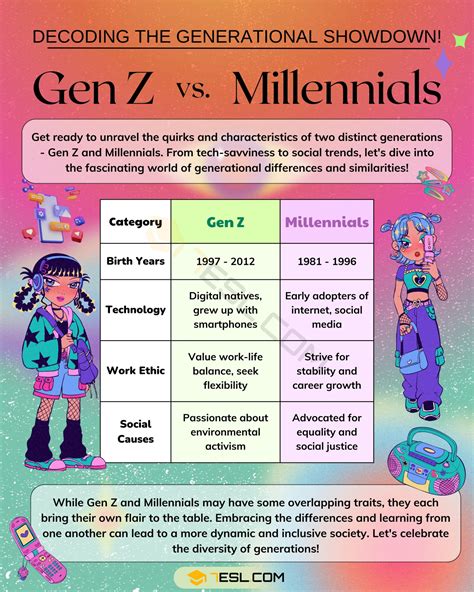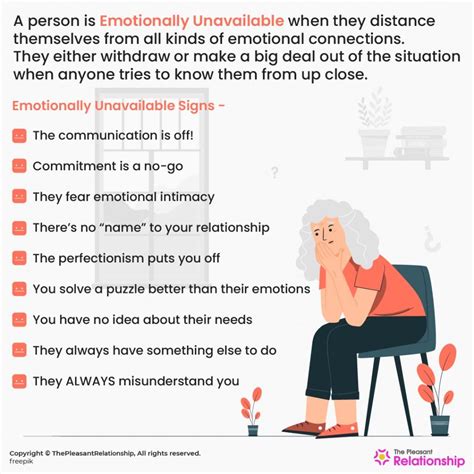
Millennials are facing a barrage of playful criticism from Gen Z for perceived “red flags,” sparking both amusement and introspection within the older generation. From skinny jeans and side parts to using outdated emojis and clinging to specific cultural references, millennials are finding themselves the subject of Gen Z’s online commentary, leading to a mix of self-deprecating humor and a touch of melancholy among those born between 1981 and 1996.
The generational divide is playing out across social media platforms, with Gen Z users highlighting what they consider to be cringeworthy millennial traits. These observations have ignited a wave of millennial responses, ranging from humorous self-deprecation to earnest defenses of their cultural preferences and lifestyle choices. The phenomenon reflects broader shifts in cultural trends, technological adoption, and generational values, prompting a deeper examination of how different age groups perceive and interact with the world.
The online roasting began picking up steam over the past few years, and it is mostly playing out on platforms like TikTok and Twitter, where Gen Z users are known for their quick wit and trend-setting abilities. Millennials are actively participating in the discussion, often using the hashtag #MillennialRedFlags to share their own perspectives and engage with Gen Z’s critiques. This intergenerational dialogue has brought to the surface a variety of cultural differences and preferences, which are shaping the online discourse.
One of the most prominent targets of Gen Z’s critique is millennial fashion. Skinny jeans, a staple of millennial wardrobes for over a decade, have been deemed outdated and unfashionable by Gen Z, who favor looser, more relaxed silhouettes. Similarly, the side part hairstyle, once a ubiquitous millennial look, has been replaced by the middle part, which Gen Z considers to be more modern and flattering.
Millennial use of emojis has also come under scrutiny. Gen Z finds certain emojis, such as the “crying laughing” emoji 😂 and the “thumbs up” emoji 👍, to be overused and even passive-aggressive. They prefer more nuanced and expressive emojis or, in many cases, no emojis at all. The generational differences in emoji usage highlight how communication styles evolve across different age groups.
Beyond fashion and emoji usage, Gen Z has also poked fun at millennial cultural references and habits. Millennials’ love for specific TV shows, movies, and music from their youth is often met with amusement or indifference by Gen Z, who have grown up with different cultural touchstones. The generational gap in cultural references can lead to misunderstandings and humorous exchanges between the two groups.
“It’s all in good fun, mostly,” says Sarah, a 35-year-old millennial who works in marketing. “I get it. We’re the ‘old’ people now. But some of these trends were genuinely great, and I’m not giving up my skinny jeans anytime soon.”
While many millennials take the Gen Z roasts in stride, some admit to feeling a twinge of sadness or insecurity. The critiques can be a reminder of their own aging and the ever-changing nature of cultural trends. “It’s hard not to feel a little outdated when you see an entire generation mocking your fashion choices,” admits Mark, a 40-year-old teacher. “But I also recognize that every generation goes through this. It’s just part of the cycle.”
The intergenerational banter also highlights the different values and priorities of millennials and Gen Z. Millennials, who came of age during the late 20th and early 21st centuries, often prioritize stability, career advancement, and homeownership. Gen Z, who have grown up in a more uncertain and rapidly changing world, tend to value authenticity, social justice, and work-life balance. These differences in values can contribute to misunderstandings and differing perspectives on various issues.
According to a recent survey, 60% of millennials have reported encountering Gen Z’s critiques online. Of those, 45% said they found the roasts humorous, while 20% admitted to feeling self-conscious or outdated. The remaining 35% were indifferent or did not understand the critiques.
The Millennial “red flags” trend also has implications for marketing and advertising. Brands are increasingly aware of the generational differences in preferences and communication styles, and they are adjusting their strategies accordingly. Companies that target millennials are careful not to alienate Gen Z consumers, while brands that target Gen Z are mindful of appealing to millennial parents and influencers.
“Understanding the nuances of each generation is crucial for effective marketing,” says Emily Carter, a marketing consultant who specializes in generational trends. “You can’t use the same tactics for millennials that you use for Gen Z. They have different values, different preferences, and different ways of consuming information.”
Ultimately, the Millennial “red flags” phenomenon is a reminder of the ever-evolving nature of culture and the ongoing dialogue between generations. While the critiques can sometimes sting, they also provide an opportunity for self-reflection and a deeper understanding of the different perspectives that shape our world. The online banter fosters a sense of community, even when it is critical or teasing.
The conversation continues as millennials and Gen Z both learn from one another, navigating cultural norms and expectations while maintaining their unique identities. The playful roasting serves as a cultural barometer, reflecting broader societal shifts and technological advancements, even offering both groups a chance to examine their own values and assumptions.
The scrutiny faced by Millennials extends beyond mere fashion choices or emoji preferences. It touches upon deeper societal issues, economic realities, and the impact of technological advancement that have shaped both generations differently. The early adulthood of many millennials was marked by the 2008 financial crisis, leading to long-term economic consequences like student loan debt and delayed homeownership. These experiences have instilled a sense of caution and pragmatism in many millennials, which can sometimes be perceived as being overly cautious or risk-averse by Gen Z.
Gen Z, on the other hand, has grown up in a world shaped by social media and rapid technological advancements. They tend to be more digitally savvy and comfortable with expressing their opinions and values online. This can lead to a perceived sense of entitlement or idealism among Gen Z, which can clash with the more pragmatic and experienced worldview of millennials.
The “red flags” trend also touches upon the issue of nostalgia. Millennials are often accused of being overly nostalgic for the 1990s and early 2000s, clinging to cultural references and trends from their youth. This nostalgia can be seen as a way of coping with the challenges of adulthood or as a way of preserving a sense of identity in a rapidly changing world. Gen Z, however, is more focused on the present and future, often dismissing millennial nostalgia as being outdated and irrelevant.
The differences in values and priorities between millennials and Gen Z can also lead to disagreements in the workplace. Millennials tend to value hard work, loyalty, and career advancement, while Gen Z prioritizes work-life balance, authenticity, and social impact. These differing expectations can create tension and misunderstandings between the two generations in the workplace.
The trend, at its core, represents a form of cultural evolution, with each generation leaving its mark and challenging the norms established by the previous one. It is a reminder that culture is not static but constantly evolving, shaped by technological advancements, social movements, and economic realities.
As the intergenerational dialogue continues to unfold, it is important to approach the discussions with a sense of humor, empathy, and a willingness to learn from one another. By understanding and appreciating the different perspectives of each generation, we can bridge the generational gap and create a more inclusive and understanding society. It can also foster greater understanding across generations as they work together and co-exist in a rapidly changing world.
Beyond the playful online banter, the trend reflects deeper societal shifts and evolving cultural landscapes. The scrutiny is not simply about fashion choices or emoji preferences; it underscores the different experiences and values that have shaped each generation. The rise of social media, for example, has profoundly impacted how Gen Z communicates and interacts with the world, leading to a more fluid and expressive online culture. This contrasts with the millennial generation, who grew up in a transitional period between analog and digital, and often retain communication styles that Gen Z perceives as outdated or inauthentic.
The economic realities faced by each generation also play a significant role in shaping their perspectives. Millennials entered the workforce during a period of economic instability, marked by the 2008 financial crisis and rising student debt. These experiences have instilled a sense of caution and pragmatism in many millennials, who often prioritize financial security and career stability. Gen Z, on the other hand, has grown up in a more uncertain economic climate, with increasing concerns about climate change, social inequality, and political polarization. This has led to a greater emphasis on social activism, environmental sustainability, and challenging traditional power structures.
The “red flags” trend also reflects the evolving nature of identity and self-expression. Gen Z is often praised for its inclusivity and acceptance of diverse identities, challenging traditional gender roles and embracing a more fluid understanding of sexuality and relationships. This contrasts with the millennial generation, who grew up in a more conservative and less inclusive society, and may sometimes struggle to keep up with the rapid pace of social change.
The scrutiny also touches upon the issue of technological fluency. Gen Z is considered to be “digital natives,” having grown up immersed in technology and social media. They are adept at navigating online platforms, creating content, and building online communities. Millennials, while also tech-savvy, often lack the same level of intuitive understanding and comfort with new technologies. This can lead to humorous misunderstandings and differing perspectives on the role of technology in everyday life.
The trend presents opportunities for both generations to learn and grow. Millennials can benefit from Gen Z’s fresh perspectives on social issues, technological trends, and creative expression. Gen Z can learn from millennial’s experiences in the workforce, their pragmatic approach to problem-solving, and their ability to navigate complex social situations.
The ongoing dialogue is fostering a greater understanding and appreciation of the differences and similarities between the two generations. It is a reminder that each generation has its own unique strengths and weaknesses, and that by working together, they can create a more inclusive and prosperous future.
The lighthearted ribbing and playful critiques between millennials and Gen Z reveal deeper cultural and societal shifts, particularly regarding technology adoption and its impact on communication styles. Millennials, who witnessed the rise of the internet and social media, tend to use technology in a more functional and practical manner, whereas Gen Z, having grown up immersed in a digital world, view technology as an integral part of their identity and social interaction.
This distinction is evident in their communication styles. Millennials often rely on email and formal language, while Gen Z prefers instant messaging, short-form videos, and visual communication. The use of emojis, for instance, has become a battleground between the two generations, with Gen Z finding millennial’s overuse of certain emojis to be outdated and inauthentic.
Moreover, the way each generation consumes and processes information differs significantly. Millennials, accustomed to longer articles and in-depth analysis, often struggle to adapt to Gen Z’s preference for bite-sized content and visually engaging formats. Gen Z, on the other hand, may find millennial’s reliance on traditional media and established sources to be slow and inefficient.
The digital divide between millennials and Gen Z extends beyond communication styles and information consumption. It also affects their approach to work, education, and social activism. Gen Z is more likely to embrace remote work, online learning, and digital activism, while millennials may prefer traditional office settings, in-person instruction, and organized protests.
The differences in technological fluency and digital habits between millennials and Gen Z can create both challenges and opportunities. In the workplace, for example, it can lead to misunderstandings and communication breakdowns. However, it can also foster innovation and creativity, as each generation brings its unique skills and perspectives to the table.
The key to bridging the digital divide between millennials and Gen Z lies in mutual understanding and adaptation. Millennials need to be willing to embrace new technologies and communication styles, while Gen Z needs to appreciate the value of traditional methods and established knowledge.
By learning from each other and embracing their differences, millennials and Gen Z can create a more inclusive and technologically advanced society. The ability to communicate and collaborate effectively across generational lines is becoming increasingly important in a rapidly changing world, where technology plays a central role in every aspect of our lives.
The “red flags” also extend to financial habits and attitudes toward work, reflecting the economic realities that have shaped each generation. Millennials, many of whom entered the workforce during the 2008 financial crisis, often carry the burden of student loan debt and struggle with homeownership. This has led to a more cautious and pragmatic approach to finances, with a focus on saving, budgeting, and avoiding unnecessary risks.
Gen Z, on the other hand, has grown up in a gig economy, where freelance work and entrepreneurship are increasingly common. They are more likely to prioritize experiences over material possessions and to seek out jobs that align with their values and passions. This can lead to a more flexible and innovative approach to work, but it can also result in financial instability and a lack of traditional benefits.
The differences in financial habits and attitudes toward work between millennials and Gen Z can create tension and misunderstandings. Millennials may view Gen Z’s spending habits as frivolous and irresponsible, while Gen Z may see millennials as being overly focused on money and security.
The generational gap in financial literacy also contributes to the differences in financial behavior. Millennials often lack the financial education necessary to make informed decisions about investing, retirement planning, and debt management. Gen Z, on the other hand, has access to a wealth of online resources and tools that can help them learn about personal finance.
The key to bridging the financial divide between millennials and Gen Z lies in open communication and education. Millennials need to share their experiences and lessons learned with Gen Z, while Gen Z can help millennials navigate the complexities of the modern financial landscape.
By working together and sharing their knowledge, millennials and Gen Z can create a more financially secure and prosperous future for themselves and for generations to come. The intergenerational dialogue about money and work is essential for fostering financial literacy and promoting responsible financial behavior across all age groups.
Frequently Asked Questions (FAQ)
-
What are “Millennial Red Flags”?
- “Millennial Red Flags” refer to traits, habits, or cultural preferences exhibited by millennials (those born between 1981 and 1996) that are perceived as outdated, cringeworthy, or undesirable by younger generations, particularly Gen Z. These can range from fashion choices like skinny jeans and side parts to emoji usage and attachment to specific cultural references.
-
Why is Gen Z “roasting” millennials?
- Gen Z’s critiques of millennials are often playful and humorous, stemming from differences in cultural trends, technological adoption, and generational values. Gen Z has grown up in a rapidly changing world shaped by social media and digital technology, leading to different perspectives and preferences compared to millennials who came of age in a transitional period. This creates a dynamic where each generation playfully challenges the norms of the other.
-
How do millennials feel about being “roasted” by Gen Z?
- Millennial reactions vary. Many take the critiques in stride, finding humor in the generational differences and engaging in self-deprecating jokes. However, some admit to feeling a twinge of sadness or insecurity, as the roasts can be a reminder of their own aging and the ever-changing nature of cultural trends. The overall sentiment is a mix of amusement, self-reflection, and a recognition of the cyclical nature of generational trends.
-
What are some specific examples of “Millennial Red Flags”?
- Common examples include:
- Fashion: Wearing skinny jeans, side parts, and certain types of shoes.
- Emoji Usage: Overusing the “crying laughing” 😂 and “thumbs up” 👍 emojis.
- Cultural References: Clinging to nostalgic references from the 1990s and early 2000s.
- Communication Styles: Using formal language and email excessively, rather than instant messaging.
- Financial Habits: Prioritizing homeownership and traditional career paths over experiences and flexibility.
- Common examples include:
-
What is the significance of the “Millennial Red Flags” trend beyond just humor?
- The trend reflects broader societal shifts and evolving cultural landscapes. It highlights the different experiences, values, and priorities that have shaped each generation. It also touches upon issues of technological adoption, economic realities, and the evolving nature of identity and self-expression. The trend provides an opportunity for both generations to learn from each other, bridge the generational gap, and create a more inclusive and understanding society.









